Workouts


The Ultimate Guide to Bodybuilding and Muscle Growth as a Trans Man
Useful articles
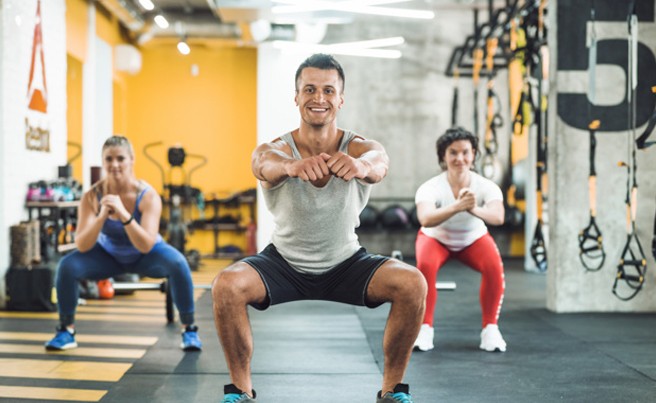
Talking about trans issues is a delicate subject. Everyone’s transition journey is different. Some people are content with a new pronoun, a new wardrobe, and some cosmetics. Others pursue a route of bodily transformation including hormones and surgery. It’s impossible to generalize for an entire group of people, and offensive besides.
That said, if your intent during or after a gender transition is to bulk up, build muscle, and get into bodybuilding, we have tips and advice for you.
First, a Disclaimer
Before we dig into too many details, we need to address the elephant in the room: dysphoria. Gender dysphoria is often, though not always, a key component of the trans journey. It’s what drives many people to realize they’re trans in the first place, and pursuing a body shape that eliminates dysphoria is a goal for many.
For some, bodybuilding helps sculpt the body into something more masculine, which can help with dysphoria. For others, bodybuilding may feel good, but it doesn’t help with dysphoria. Remember: bodybuilding isn’t a guaranteed cure. It’s something you can pursue, and it might help, and that’s great if it does. If it doesn’t, well, bodybuilding has a range of other benefits for health and wellness, so it can be worthwhile to keep up with it even if it’s not helping with your dysphoria.
One thing to remember is that some bodybuilders, even those who aren’t trans, can suffer from dysphoria that leads them to do potentially dangerous things. In the constant pursuit of a stronger-looking, bulkier, more muscular body, some people pursue steroids, untested drugs, or even injections like synthol that can be dangerous or even deadly. It’s just proof that bodybuilding isn’t necessarily a cure for what ails you; it’s a tool that can be beneficial or detrimental depending on the situation.
All people are not created equal, and what may be a great healthy thing to do for some may be a bad idea for others, depending on their mental state, overall fitness and health, hormone levels, and other external factors.
Now that we’ve gotten that disclaimer out of the way, let’s dig in!
Don’t Treat the Female Body as a Limitation
Let’s talk about inspiration. You may have read stories about how testosterone injections enhance strength, and indeed that’s true, but it’s not required to sculpt a body you want.
First, you can look at some examples of successful female bodybuilders. They serve as proof that even if you’re not on testosterone injections, you can still build muscle and change your appearance. Testosterone helps, and it can help build muscle in different ways, so it’s not a direct comparison. It’s simply proof that the female body, regardless of the mind inhabiting it, can build strength and muscle just like any other body.
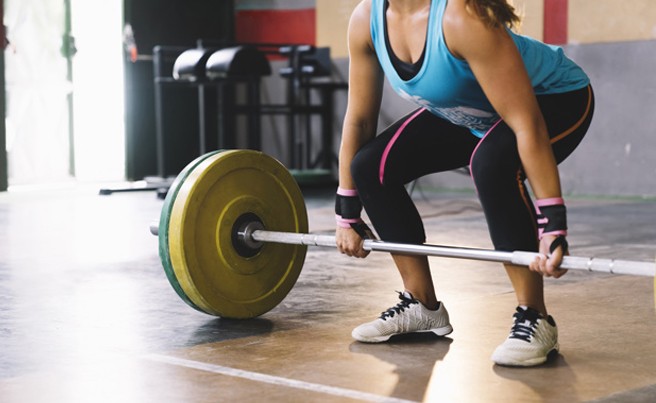
Second, you can take a look at some of the most inspirational transgender bodybuilders out there. Forgive the title of the linked post; not everything can be perfect. These men serve as an excellent example that, despite a biologically female body, a sculpted and muscular masculine form is perfectly attainable.
Your biological origins don’t hold you back. They may change what you need to do to reach your goals, but you can still, always, reach those goals with the right diet and exercise plan.
Determine Your Goals
The key to any successful bodybuilding plan is knowing what your goals are. You may not have a firm idea of what you want your body to look like, but you can work towards improving it and change your plan later to adjust where you end up.
One thing to keep in mind is that bodybuilding doesn’t necessarily mean competition. Many of the most famous, inspirational, and prominent transgender bodybuilders are competition bodybuilders, but that’s self-selected bias. Many of the trans men out there who do bodybuilding don’t care about the fame of competition, so they aren’t in the spotlight. The ones who seek the spotlight tend to be more competitive about it, is all.
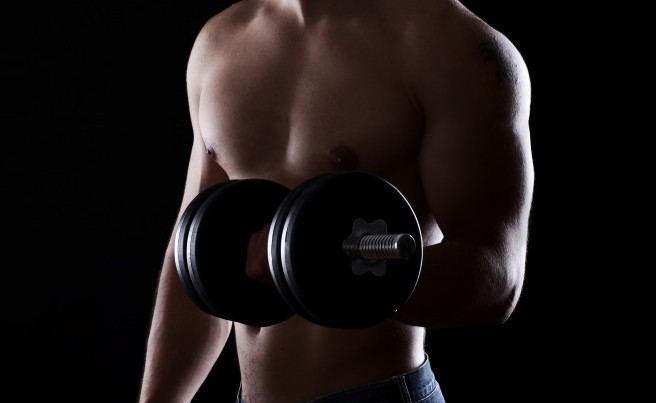
If you want to compete, you certainly can. You may need to look into the all-transgender bodybuilding contests until such time as organized bodybuilding catches up to reality, but the world is steadily opening up and accepting transgender organizations and integration, so it’s only a matter of time.
On the other hand, if you have no interest in competition and simply want to sculpt your body into something you can be proud of, you can do that too. All you really need is access to a gym or some home gym equipment, and contact with a personal trainer who can help you.
Now, we’re certainly aware that finding a personal trainer who knows the trans journey can be difficult. Depending on where you live, they may be few and far between. It’s worthwhile to spend the time to find a personal trainer you like and can work with, who you can be open and honest with, and who can give you good advice. Make sure to proviron dosage monitor your progress and, if it’s not acceptable to you, find a different trainer.
How Muscle Growth Happens
While there are definitely distinct differences between biologically male and biologically female bodies, one thing that isn’t all that different is muscle growth. Muscles are not gender-specific.
In order to grow muscle mass, you need to follow the right guidelines. They apply regardless of gender status, phase of transition, or biological sex:
- Give your body the protein and fuel it needs to grow.
- Eat healthy, balanced meals that minimize body fat and enhance muscle growth.
- Take supplements (such as protein, amino acids, and omega3s) as necessary.
- Push yourself outside of your comfort zone to encourage growth.
- Avoid over-training and injuring yourself; recovery time is important for muscle growth.
- Get good sleep.
None of these are gender-specific.
Muscle growth happens when you push your body to its limits. Your muscles strain and tear when you lift more than you’ve lifted before, pushing them to their limits. This minor damage isn’t enough to hurt you beyond the ache of a good workout, but it’s crucial to reach this point. When you push yourself to the point of damage, and that damage heals, the muscle that you’re left with is stronger, larger, and more powerful than before.
If you want, you can dig deep into the science of muscle growth, understanding how minor damage leads to repairs via the muscle satellite cells, leading to muscular hypertrophy and increased strength. Or you can boil it down to one key takeaway: pushing yourself to your limits, and beyond them, so long as you don’t injure yourself, will leave you stronger than you were before.
How Testosterone Affects Muscle Growth
Testosterone is the key difference between female and male bodies. It’s why the core of most transitions is the hormone injections. More than just secondary sex characteristics like facial hair and voice deepening, testosterone affects two things: distribution of body fat and muscle power.
When you start taking T, one thing you may notice is that the distribution of body fat across your body changes. Before, it’s often distributed in the hips, the arms and underarms, and across the chest. With testosterone, it shifts; it moves away from the hips and up to the abdomen, primarily.
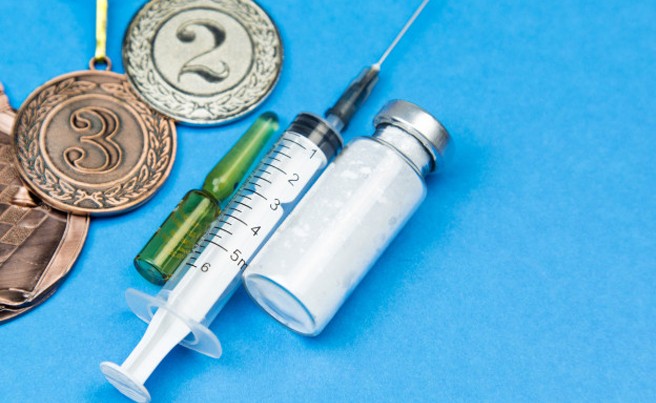
Testosterone has a wide range of effects on the body, but the ones we’re most concerned with today are related to muscle growth. T increases your body’s natural levels of HGH, or Human Growth Hormone, which is what stimulates the growth of muscle. Exercise becomes more effective at building more muscle, while also strengthening bones to be more resistant to injury.
Testosterone also helps the body convert fat into energy. This can make it easier to lose weight, easier to maintain energy levels throughout a workout, and easier to keep body fat off.
While it makes it easier to do these things, it’s still going to be a process. Nearly immediately upon starting a testosterone regimen, you will notice an increase in strength. However, it’s important not to benchmark yourself against other transgender bodybuilders around you.
While it’s good to build a community, remember that everyone’s body is unique and the way T affects your body might not be the same as the way it affects another person. Some people see an immediate change in their voices and hair, while others see it more in their body fat, and still, others find more sexual or mental effects over the physical effects.
Just because someone else is seeing huge gains and you aren’t – or vice versa – doesn’t mean either of you are doing something wrong. It simply means your bodies are reacting differently. This is, again, the main reason you want to work with a personal trainer who can develop a plan for you, specifically, to help you reach the goals you want to reach.
Overcoming the Plateau
Probably one of the worst moments in a bodybuilding journey is the plateau, and it’s made much worse for trans male bodybuilders because of the huge increase in gains caused by testosterone injections. When you start bodybuilding, you see an immediate decrease in body fat and growth in muscle. At the same time, starting T improves these effects by leaps and bounds.

Sooner or later, though, your gains will seem to top off, and you’ll reach a plateau. The plateau is a moment where you’re working hard but it seems like you’re no longer able to improve. Try as you might, it feels like you can’t gain any more strength or push past the barriers keeping you down.
For some trans bodybuilders, this comes with an added level of discomfort, dysphoria, and depression. It can feel like a betrayal, from the system, from your body, from the testosterone, and anywhere else your mind can blame.
It’s important to recognize that the plateau is not your fault, or the fault of your training, your hormones, your body, or anything else. It’s simply a fact of bodybuilding that everyone encounters sooner or later. Try not to beat yourself up over it.
We wrote a guide on how to recognize and overcome a plateau in muscle growth. You can read it here. Learn to recognize a plateau, and how to overcome it.
How to Embark on Bodybuilding
Our number one recommendation is always going to be this: find a good personal trainer you can work with to achieve your goals. There are thousands of trainers out there, and you may not find the right one right away. Some will have attitudes or personalities you don’t like. Some will fail to motivate you in the way that works best for you. Some of them won’t respect who you are, and there’s no reason you need to subject yourself to them for the sake of bodybuilding. There’s always another trainer out there you can try.
We also recommend taking things relatively slow. The burst of strength you get from testosterone can make it appealing to dive head-first into bodybuilding, but it also makes it very easy to accidentally over-train, injure yourself, or otherwise cause more harm than good.
The core of good bodybuilding is to establish your goals, then establish a workout routine that can bring you to those goals. This might mean more cardio and high rep, low weight training for a leaner look. It might mean a focus on different muscle groups, high weight low rep exercises, and a focus on pure strength. It might be a blend. Again: everyone is different. Find a routine that works to meet your goals.
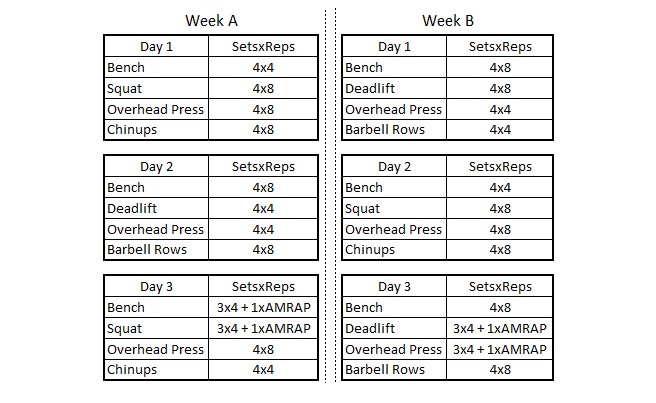
A good place to start is a classic thrice-weekly routine that trains your full body. This kind of training gets you familiar with a wide variety of exercises, muscle groups, proper forms, and your own body. This guide is a pretty good place to start, but there are thousands more like it online with their own recommended routines. It doesn’t entirely matter what routine you start with. The key is to get started, and then work to customize your routine to suit your needs and desires.
Finally, make sure to spend an adequate amount of time in recovery. Particularly with T, it can be very tempting to over-train, particularly because you’ll have a lot of excess energy. Recovery is crucial to your bodybuilding success, though, so it’s critical that you keep it in mind.
Thank! Your message has been sent successfully.


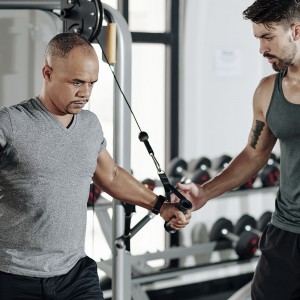
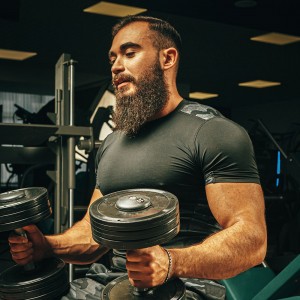


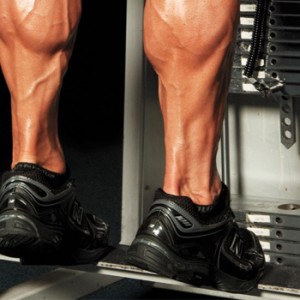



Questions and answers 0